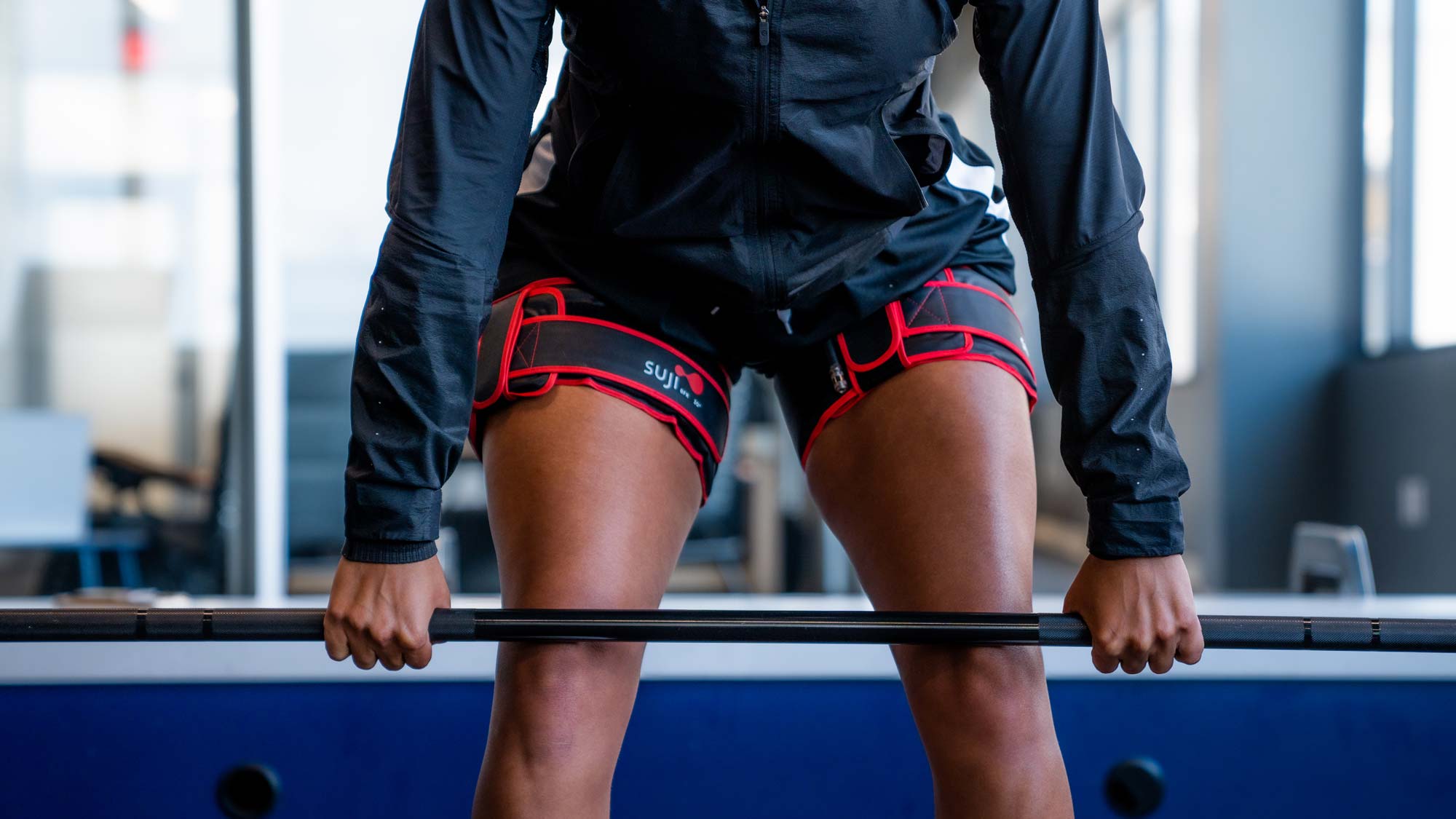Blood flow restriction (BFR) training is rapidly becoming a common training modality in exercise rehabilitation programmes. The appeal of BFR training is that the user can achieve improvements in muscle strength, muscle mass and cardiovascular function using relatively low training intensities, adaptations more typically reserved for strenuous exercise. BFR training evolved as a strategy to increase muscle mass and rehabilitate injury (
What is blood flow restriction training?), however we are now beginning to understand that the benefits of BFR are likely to also impact bone, tendons and blood vessels among other systems in the body. While there remains valid concerns about the safety of BFR training techniques, in a research setting BFR has been applied to a wide range of clinical subjects including those with hypertension, kidney disease, osteoporosis and Parkinson's disease. BFR researcher Professor Jeremy Loenekke recently described BFR in three separate phases
(Loenekke, 2019):
- BFR applied in the absence of muscle contraction
- BFR in combination with low-intensity cardiovascular exercise
- BFR in combination with low-load resistance exercise
The first of these phases suggests that the application of BFR can be used as a standalone treatment strategy and has been demonstrated effective at maintaining muscle mass and strength.

Blood flow restriction training involves partially occluding blood flow to the working muscles during physical activity.
BFR in the absence of muscle contraction:
The concept of using BFR as a passive strategy was first described in a research paper by Takarada et al. (2000) over 20 years ago. This study was conducted in post-operative ACL reconstruction patients and BFR was trialled as a strategy to minimize quadriceps wastage post-surgery. In ACL rehabilitation quadriceps dysfunction has the potential to create abnormal movement patterns, impair activities of daily living and increase the likelihood of re-injury. In this study, participants wore BFR training cuffs for 5 x 5min intervals with 3mins of rest between. The cuffs were inflated from 180-240mmHg and the pressure progressed from day 3-14 post ACL reconstructive surgery. During this period the experimental group who wore the cuffs reported a 9.4% decrease in quadriceps muscle mass, while the control group (who followed the same protocol in the absence of BFR) reported a 20.7% decrease in quadriceps mass. While these findings have important clinical implications, it is important to note that this line of research remains in its infancy and further research is required to understand the clinical significance of these findings. More recently Barbalho et al (2019) used a similarly passive BFR protocol with intensive care patients. Within this study, subjects were taken through passive mobilization exercise that is common to intensive care. Throughout, one limb was subject to BFR using a tourniquet, while the other limb served as a control. Within this study BFR appeared as valid and effective strategy to reduce muscle wasting in intensive care patients. The mechanisms by which BFR may prevent muscle wastage remain unclear. However, if we are to re-consider the different ways in which BFR in combination with resistance exercise may trigger muscle growth, some popular theories have been hypothesized (
BFR training and muscle growth). Perhaps the most common theory is the concept of cellular swelling. BFR training completely occludes blood flow
away from the muscles, however typically only partially occludes blood flow
to the muscles. This causes an accumulation of fluid that can transfer in to the muscle cells and presents as an important stimulus for muscle growth. This concept remains speculative and further research in this area is required.
BFR and neuromuscular electrical stimulation:
Neuromuscular electrical stimulation is commonly used as a rehabilitation strategy to prevent muscle atrophy during periods of immobilization, by delivering an electrical impulse to the nerves to trigger a series of involuntary muscle contractions. Given that BFR training is based on the premise that a muscle growth stimulus can be achieved with low-intensity training, it is plausible that muscle contractions evoked by NMES may induce muscle hypertrophy when combined with BFR. This concept was first explored by Natsume et al. (2015) who exposed subjects to 2x sessions per day, 5x days per week, for 2 weeks of NMES either with or without additional BFR. When combined with BFR, NMES led to a 3.9% increase in muscle thickness, a 14.2% increase in isometric strength and a ~8% increase in isokinetic strength. No noticeable changes were observed when NMES was used as a standalone intervention. These findings have recently received support within the literature (Slysz et al., 2020), however this line of research is still very young. Remarkably, BFR combined with NMES has also been shown to have implications for people suffering from spinal cord injuries. Incomplete tetraplegia is a form of spinal cord injury commonly associated with atrophy of the wrist-extensor muscles leading to limited upper body extremity function, impaired fine motor control and increased dependency. Research from Gorgey et al. (2016) demonstrated a 15% increase in the cross-sectional area of the extensor carpi radialis longus muscle (a key wrist extensor muscle) following 6 weeks of BFR combined with NMES training. This change was coupled with an increase in wrist strength and hand function that was observed in both experimental groups. This findings exemplify the capacity for BFR training to be a crucial tool in clinical individuals who are contraindicated to traditional strength training methods.
Final word:
The use of BFR training in the absence of physical exercise is a relatively new concept. To date only a handful of research papers have explored its clinical effectiveness as a rehabilitation strategy, however the results are thus far encouraging. The capacity to limit muscle wastage in those physically unable to exercise has significant and important clinical implications and the capacity to improve rehabilitation and quality of life outcomes.
References:
- Takarada, Y., et al., Applications of vascular occlusion diminish disuse atrophy of knee extensor muscles. Medicine and Science in Sport and Exercise, 2000. pp. 2035-2039. https://pubmed.ncbi.nlm.nih.gov/11128848/
- Natsume, T., et al., Effects of Electrostimulation with Blood Flow Restriction on Muscle Size and Strength. Medicine and Science in Sport and Exercise, 2015. pp. 2621-2627. https://pubmed.ncbi.nlm.nih.gov/26110693
- Slysz, J. T., et al., The Effects of Blood Flow Restricted Electrostimulation on Strength and Hypertrophy. Journal of Sport Rehabilitation, 2018. 27: pp. 257-262. https://pubmed.ncbi.nlm.nih.gov/28513326/
- Gorgey, A. S., et al., Electrical stimulation and blood flow restriction increase wrist extensor cross-sectional area and flow mediated dilation following spinal cord injury. European Journal of Applied Physiology, 2016. 116: pp. 1231-1244. https://pubmed.ncbi.nlm.nih.gov/27155846/
 Blood flow restriction training involves partially occluding blood flow to the working muscles during physical activity.
Blood flow restriction training involves partially occluding blood flow to the working muscles during physical activity.



Leave a comment
This site is protected by hCaptcha and the hCaptcha Privacy Policy and Terms of Service apply.